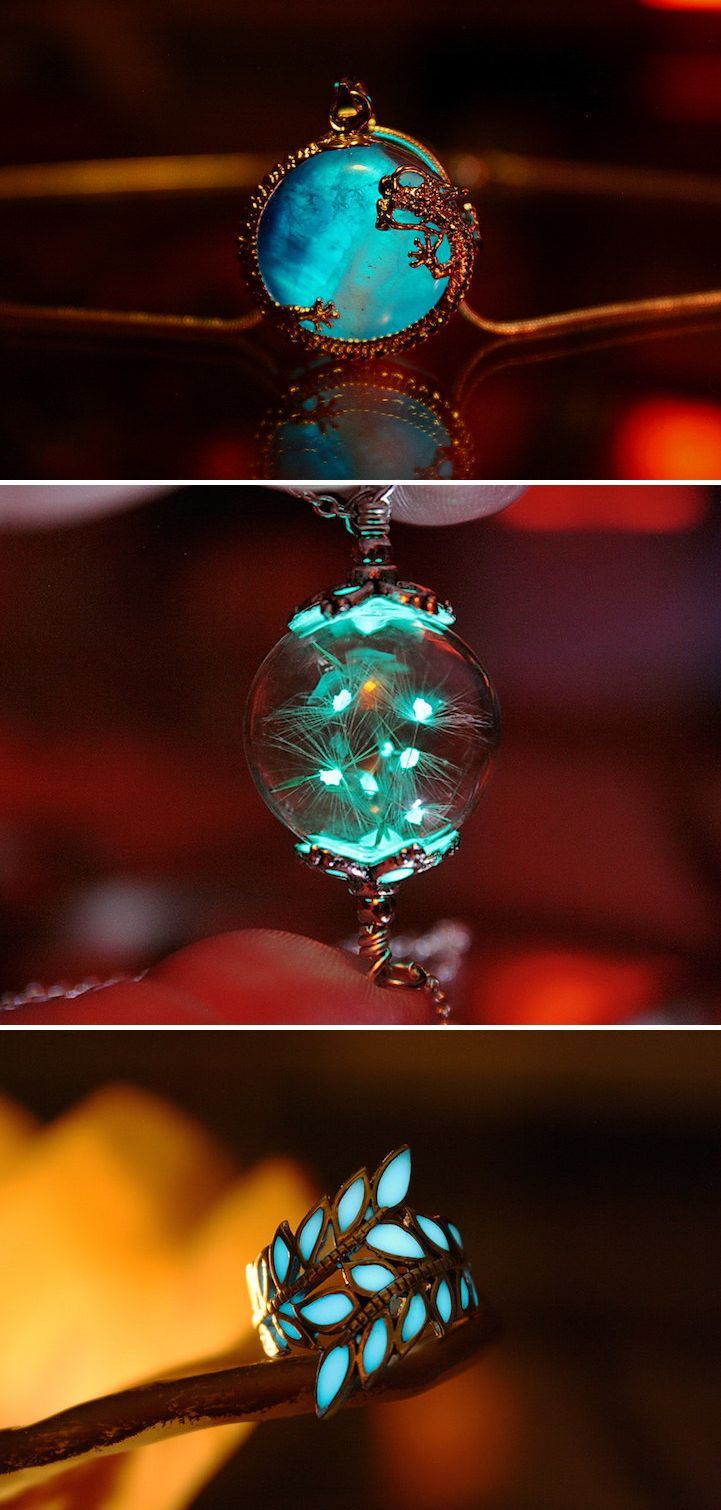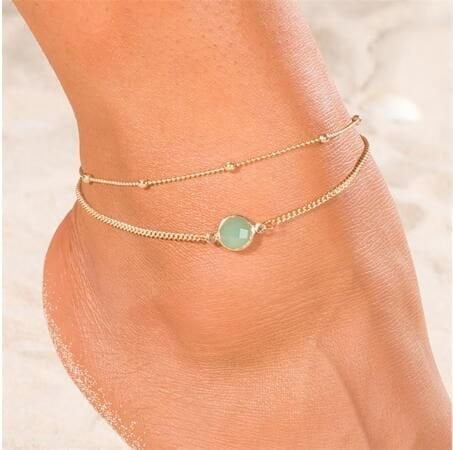Are you looking to add a touch of elegance and luxury to your jewelry collection? If so, learning how to gold plate jewelry could be the perfect way to achieve that desired look.
Gold plating is a process that involves depositing a thin layer of gold onto the surface of another metal, giving the jewelry item the appearance of being made entirely of gold. In this article, we will explore the basics of gold plating, from understanding the process to providing a step-by-step guide for gold plating jewelry at home.
Before diving into the practical aspects of gold plating, it’s essential to have a good understanding of the process itself. We will discuss what gold plating is, how it differs from other similar processes such as gold-filled or gold vermeil, and the benefits and limitations of choosing this method for enhancing your jewelry pieces.
Once you have grasped the fundamentals of gold plating, we will move on to discussing how to choose the right jewelry items for this process. Not all metals can be effectively plated with gold, so it’s crucial to know which pieces in your collection are suitable candidates for this transformation.
We will also touch on factors such as thickness and shape that can impact the success of the plating process. Additionally, we will explore alternative methods for achieving a similar look if some items are not suitable for traditional gold plating techniques.
Choosing the Right Jewelry Items to Gold Plate
When considering which jewelry items to gold plate, it’s important to select pieces that are in good condition and made of a suitable base metal. Typically, jewelry made of metals such as brass, copper, or silver are ideal for gold plating. It’s also important to choose items with a smooth surface that will allow for an even application of the gold plating solution.
Another factor to consider when choosing jewelry items to gold plate is their sentimental value and frequency of use. Pieces that hold sentimental value or are worn frequently are perfect candidates for gold plating, as the process can restore their luster and ensure they remain in great condition for years to come.
Additionally, consider the size and design of the jewelry item. Smaller and simpler pieces such as rings, earrings, or pendants are easier to gold plate at home compared to larger or more intricate items like bracelets or necklaces. It’s also recommended to start with smaller items when beginning your gold plating journey to gain experience before tackling larger projects.
To ensure successful gold plating results, carefully assess the jewelry items you plan to work on and choose those that best align with these considerations.
Gathering the Necessary Materials and Tools
Before you start gold plating your jewelry, it is important to ensure that you have all the necessary materials and tools at hand. Here is a list of the items you will need:
- Gold plating kit: This typically includes a container of gold solution, a power supply, a stainless steel anode, and other accessories.
- Jewelry cleaner: It is essential to clean the jewelry thoroughly before the plating process to remove any dirt or oils.
- Protective gear: Since gold plating involves working with chemicals and electricity, it is important to use protective gear such as gloves and goggles to ensure safety.
- Polishing equipment: You will need polishing cloths or a polishing machine to give the jewelry a smooth finish after the gold plating process.
- Cleaning and rinsing materials: This includes distilled water for rinsing, as well as alcohol wipes for cleaning the jewelry surface.
Once you have gathered all these materials, make sure that you have a well-ventilated working area with access to electricity. Additionally, familiarize yourself with the instructions provided in the gold plating kit to ensure that you understand how to operate the equipment safely and effectively.
Now that you’ve gathered all your materials and tools, it’s time to prepare your jewelry for the gold plating process. Be sure to follow the next section’s guidelines carefully in order to achieve professional results when gold plating your favorite pieces.
Preparing the Jewelry for the Gold Plating Process
Before beginning the gold plating process, it is essential to ensure that the jewelry items are properly prepared. This involves thoroughly cleaning the surface of the jewelry to remove any dirt, oils, or residue that could affect the adhesion of the gold plating. Using a gentle jewelry cleaner or warm soapy water and a soft-bristled brush can help to remove any impurities from the surface of the jewelry.
If the jewelry has any existing coatings, such as tarnish or old plating, it is crucial to remove these before proceeding with the gold plating process. This can be done using a metal polish or a chemical stripper that is specifically designed for removing coatings from metal surfaces. It is important to follow all safety guidelines and instructions when using these products and to ensure that the jewelry is thoroughly cleaned and dried after removing any existing coatings.
Masking and Protecting Certain Areas
In some cases, there may be areas of the jewelry item that you do not want to be gold plated, such as gemstones or delicate engravings. In these instances, it is important to carefully mask off and protect these areas using a high-quality jeweler’s masking tape or a specialized liquid mask. This will help to prevent these areas from being affected by the gold plating process and ensure that they remain in pristine condition.
Proper Cleaning Techniques
When cleaning your jewelry for gold plating, it’s important to use gentle cleaning techniques to avoid damaging delicate pieces. Avoid harsh chemicals or abrasive materials that could scratch or damage the surface of the jewelry. Instead, opt for mild cleaners and soft brushes specifically designed for use on jewelry.
Ensuring Proper Ventilation
When prepping your jewelry for gold plating, it’s important to do so in a well-ventilated area. Some of the cleaning and prep materials used in this process can produce fumes that may be harmful if inhaled. By working in a well-ventilated space, you can minimize your exposure to these potentially harmful fumes while preparing your jewelry for gold plating.
Consulting With Experts
If you are unsure about how to properly prepare your specific type of jewelry for gold plating, consider consulting with experts in the field. Jewelers or professional metalworkers can provide valuable insights and advice on how best to prepare different types of jewelry items for gold plating.
Step-by-Step Guide to Gold Plating Jewelry
Gold plating jewelry is a popular way to give old or outdated pieces a fresh, new look. It can also be a cost-effective alternative to solid gold jewelry. Here’s a step-by-step guide on how to gold plate jewelry at home.
First, gather all necessary materials and tools, including a gold plating kit, protective gloves, cleaning solution, and a polishing cloth. Make sure the work area is well-ventilated and free from dust or debris that could affect the plating process.
Next, prepare the jewelry for the gold plating process by thoroughly cleaning it with the provided cleaning solution. This will remove any dirt, oils, or residue that could interfere with the bonding of the gold layer.
Once the jewelry is clean and dry, carefully follow the instructions in your gold plating kit to apply the gold layer. This usually involves immersing the jewelry in a special solution and running an electrical current through it to bond the gold to the surface. Be sure to closely monitor the plating time as instructed to avoid over-plating or under-plating. Finally, once plated, gently polish and buff the jewelry to achieve a beautiful shine.
| Materials and Tools | Instructions |
|---|---|
| Gold plating kit | Follow instructions provided in kit for usage |
| Protective gloves | Wear when handling chemicals or plating equipment |
| Cleaning solution | Use to clean jewelry before plating process |
| Polishing cloth | Use to polish and buff plated jewelry after process is complete |
Common Mistakes to Avoid When Gold Plating Jewelry
When gold plating jewelry at home, it is important to be aware of common mistakes that can occur during the process. One of the most common mistakes is not properly cleaning the jewelry before gold plating.
Any dirt, grime, or oils on the surface of the jewelry can prevent the gold from adhering properly, resulting in a patchy or uneven finish. To avoid this mistake, always ensure that the jewelry is thoroughly cleaned and degreased before beginning the gold plating process.
Another common mistake when gold plating jewelry is using the wrong voltage or current during the electroplating process. This can lead to uneven deposits of gold and may result in a poor quality finish. It’s important to carefully follow the manufacturer’s instructions for your specific gold plating kit and to use the correct voltage and current settings for optimal results.
Additionally, not properly protecting sensitive areas of the jewelry during the gold plating process can lead to unintentional gold plating on unwanted areas. It’s essential to carefully mask off any areas that you do not want to be plated with a suitable barrier such as tape or lacquer to ensure that only the intended surfaces receive the gold coating.
| Common Mistakes | How to Avoid |
|---|---|
| Not cleaning jewelry before plating. | Thoroughly clean and degrease jewelry before starting. |
| Using wrong voltage/current for electroplating. | Follow manufacturer’s instructions for correct settings. |
| Unintentional plating on unwanted areas. | Carefully mask off sensitive areas with a suitable barrier. |
Finishing and Polishing the Gold Plated Jewelry
After successfully gold plating your jewelry, the next crucial step is to finish and polish the pieces to achieve a beautiful, professional-looking result. This final step will not only enhance the appearance of the gold-plated jewelry but also ensure its longevity. In this section, we will discuss the importance of finishing and polishing, as well as the methods and tools you can use to achieve a stunning end result.
Once the gold plating process is complete, it is important to inspect the jewelry for any imperfections or uneven areas. Use a magnifying glass if necessary to identify any areas that may require additional attention. The next step is to carefully buff and polish the jewelry to achieve a smooth, shiny finish. This can be done using a soft jeweler’s cloth or a special polishing cloth specifically designed for gold-plated items.
In addition to hand-polishing, you may also consider using a rotary tool with a soft buffing attachment to achieve an even and high-gloss finish. Be sure to use gentle, circular motions when buffing the jewelry to avoid damaging the delicate gold plating. Remember that proper finishing and polishing are essential not only for enhancing the aesthetic appeal of the jewelry but also for protecting the thin layer of gold from premature wear and tarnishing.
Overall, taking the time to properly finish and polish your gold-plated jewelry will not only elevate its visual appeal but also ensure its durability over time. By following these steps and using the right tools and techniques, you can achieve professional-looking results right at home.
Tips for Maintaining Gold Plated Jewelry
Gold plated jewelry can add a touch of glamour to any outfit, but it requires proper care and maintenance to preserve its beauty. Here are some essential tips for maintaining gold plated jewelry:
1. Keep it Clean: Regularly clean your gold-plated jewelry with a soft cloth to remove any dirt, oil, or sweat that may have accumulated. Avoid using abrasive materials or harsh chemicals that can scratch or damage the plating.
2. Store Properly: Store your gold-plated jewelry in a dry and cool place to prevent tarnishing. Avoid exposing it to moisture, humidity, and direct sunlight as these can cause the plating to fade or wear off.
3. Handle with Care: Be gentle when wearing and removing gold-plated jewelry to prevent unnecessary scratching or rubbing against hard surfaces. Remove your jewelry before engaging in activities such as swimming, exercising, or cleaning, as exposure to chemicals and abrasives can damage the plating.
4. Re-Plate When Necessary: Over time, the gold plating on your jewelry may wear off. If you notice significant fading or discoloration, consider taking your pieces to a professional jeweler for re-plating.
5. Avoid Contact with Harsh Chemicals: To maintain the longevity of your gold-plated jewelry, avoid direct contact with harsh chemicals such as perfumes, lotions, hairsprays, and cleaning agents that can cause the plating to deteriorate.
By following these simple yet effective maintenance tips, you can extend the life of your gold-plated jewelry and continue enjoying its lustrous appearance. Remember that proper care is essential for preserving the beauty and longevity of your favorite pieces.
Exploring Alternative Methods for Gold Plating at Home
Gold plating jewelry at home can be a fun and rewarding process, but it’s important to note that there are alternative methods for achieving the same result. One popular alternative method is using gold fill or gold overlay, which involves bonding a layer of gold onto the surface of the jewelry using heat and pressure. This method can be more durable than traditional gold plating, as the layer of gold is thicker and less prone to wear.
Another alternative method for gold plating at home is electroplating, which uses an electric current to deposit a thin layer of gold onto the jewelry. This method requires some specialized equipment, such as a rectifier and specific chemicals, but it can provide a more even and controlled application of the gold.
For those looking for a simpler and more affordable alternative, using gold leaf or gold foil to embellish jewelry is also an option. Gold leaf can be applied using adhesive and then sealed with varnish to create a beautiful, handcrafted look that mimics the appearance of real gold plating.
These alternative methods offer unique ways to achieve the look of gold plated jewelry at home, each with its own benefits and considerations. It’s important to research and understand these methods thoroughly before attempting them, as they may require different techniques and materials compared to traditional gold plating processes.
Conclusion
In conclusion, learning how to gold plate jewelry can be a rewarding and cost-effective way to enhance the beauty of your favorite pieces. By understanding the basics of gold plating and choosing the right items to plate, you can create stunning, high-quality jewelry that mimics the look of solid gold. With the right materials and tools, proper preparation, and step-by-step guidance, you can achieve professional-looking results in the comfort of your own home.
It’s important to note that there are common mistakes to avoid when gold plating jewelry, such as insufficient cleaning or improper application of the gold solution. However, with practice and attention to detail, these pitfalls can be easily overcome. Additionally, finishing and polishing the gold plated jewelry is crucial for achieving a beautiful and long-lasting result.
It’s also essential to remember that maintaining gold plated jewelry requires some care and attention. Following tips for maintenance will help preserve the luster of your pieces, ensuring they remain just as radiant as when they were first plated. Lastly, while home gold plating methods are popular, it’s worth exploring alternative methods for achieving this luxurious finish on your jewelry.
Whether through electroplating or other techniques, there are various options available for those looking to experiment with different approaches. Overall, the beauty and longevity of gold plated jewelry make it a valuable skill worth mastering for any jewelry enthusiast.
Frequently Asked Questions
Can I Gold Plate My Own Jewelry?
Yes, it is possible to gold plate your own jewelry with the right equipment and materials. However, it requires a certain level of skill and knowledge to achieve professional-looking results. It’s important to research and follow proper techniques to ensure a successful gold plating process.
What Is the Process of Gold Plating Jewellery?
The process of gold plating jewelry involves several steps. First, the jewelry piece is cleaned thoroughly to remove any dirt or oils that could interfere with the plating process.
Then, the piece is placed in a solution containing gold particles, where an electric current is used to bond the gold to the surface of the jewelry. This process requires precision and careful monitoring to achieve the desired thickness and finish.
How Do You Make Gold Plated Jewelry?
Making gold plated jewelry involves carefully selecting a base metal that can be plated with gold, such as sterling silver or brass. Once the base metal is chosen, the jewelry piece is formed, polished, and thoroughly cleaned before undergoing the actual gold plating process.
It’s important to follow proper safety guidelines and use quality materials to ensure a durable and high-quality finished product.

Welcome to my jewelry blog! My name is Sarah and I am the owner of this blog.
I love making jewelry and sharing my creations with others.
So whether you’re someone who loves wearing jewelry yourself or simply enjoys learning about it, be sure to check out my blog for insightful posts on everything related to this exciting topic!





